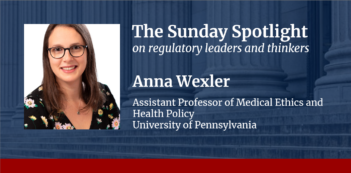
Research shows that nonprofit hospitals may not be fulfilling the obligations of their tax-exempt status
The American Hospital Association recently claimed that tax-exempt nonprofit hospitals provided a staggering $105 billion in community benefits in 2018.
But recent evidence suggests that despite these large expenditures, nonprofit hospitals are failing to meet the obligations created by their favorable tax status. This failure could mean that tax exemptions provide nonprofit facilities an unearned advantage over for-profit hospitals. In addition, inadequate engagement in community benefit activities by nonprofit hospitals could reduce the quality of care and harm patients.
Federal tax law allows nonprofit hospitals to receive certain tax exemptions in return for providing “community benefit” to the areas they serve. Community benefit often takes the form of hospitals absorbing the costs of uncompensated or subsidized medical care, otherwise referred to as “charity care.”
But according to the federal tax code, engaging in medical research and investing in improved facilities and technologies also qualify. Furthermore, federal law does not define a threshold of community benefit spending that nonprofit hospitals must meet to receive tax-exempt status.
Individual states and municipalities provide additional tax exemptions and benefits to nonprofit hospitals, but the prerequisites to receiving them vary.
Although the provision of community benefits may seem like a substantial financial burden, many hospitals find it worthwhile. In fact, about half of all hospitals in the United States take advantage of these tax exemptions.
When combined with the high value of these tax exemptions, the lack of a federal community benefit threshold results in varying levels of community benefit spending by nonprofit hospitals.
According to a study by the Lown Institute, 72 percent of private nonprofit hospitals experienced a tax-break deficit, meaning that they spent less on community benefits than they received in tax breaks. Although individual hospitals’ deficits varied considerably, the top 10 highest deficits were reported to be over $100 million.
The president and CEO of the American Hospital Association, Rick Pollack, recently disputed this finding for “cherry-picking categories of community investment while ignoring others.” For example, Pollack notes that the study did not consider medical research and education in its calculation of community benefit spending.
The study’s authors indicated, however, that they explicitly omitted these categories of spending because they “do not have a direct impact on the health” of hospitals’ communities.
In the future, the categories of spending and investment that qualify as “community benefits” are likely to be a key point of debate between nonprofit hospitals and outsiders.
Tax-exempt nonprofit hospitals still contribute to community benefit on the whole, regardless of deficits between tax breaks received and benefits disbursed. But in many ways, for-profit hospitals do too. In fact, in 2018, for-profit hospitals used a larger proportion of their expenditures for charity care, one form of community benefit spending, than nonprofit hospitals did.
In addition to inviting scrutiny over the level of tax benefits received in excess of community benefits given, lower community benefit spending by nonprofit hospitals may also harm patients financially and lower quality of care.
First, by offering lower amounts of charity care, nonprofit hospitals may place significant financial strain on patients by forcing certain uninsured or underinsured individuals to shoulder the costs of the goods and services provided to them. Given the high cost of medical services, this may harm patients by leaving them with credit issues or forcing them to file for bankruptcy.
Second, the federal tax code’s definition of “community benefit” includes the acquisition of new medical facilities and equipment. Disproportionate spending of this kind, however, can help nonprofit hospitals consolidate and secure market dominance. This consolidation often adversely affects regional health care costs and lowers quality of care.
Researchers have presented many possible solutions to ensure that nonprofit hospitals’ community benefit spending aligns with the obligations of their favorable tax status.
Some experts propose the adoption of a minimum threshold for community benefit spending. For example, Nevada requires nonprofit hospitals to spend at least 0.6 percent of the preceding year’s net revenue on community benefits to qualify for property and sales tax exemptions.
This solution may bring about two concerns, according to experts. First, some researchers caution that this approach may chill community benefit spending overall, as hospitals exceeding the threshold may reduce their efforts to the minimum level required. Second, a single national standard may not reflect regions’ varying levels of need for community benefit spending.
Researchers argue that the adoption of a “floor-and-trade system,” however, may answer both of these concerns. Under this system, the government would set a minimum threshold of community benefit spending for tax exemption. For expenditures above this threshold, nonprofit hospitals would receive credits that they could then sell to hospitals that do not meet their obligation. To qualify for a tax exemption, nonprofit hospitals would have a choice between meeting the threshold themselves or purchasing credits to make up for any underspending.
Researchers also propose that subsidies in the form of credits could encourage extra community benefit spending by hospitals located in needy regions.
In Congress, researchers have a friend in U.S. Senator Chuck Grassley (R-Iowa), who has advocated clarifying and changing community benefit requirements for over a decade. Despite this support, however, little movement on the issue has occurred at the federal level, leaving the states to regulate it as they see fit.



